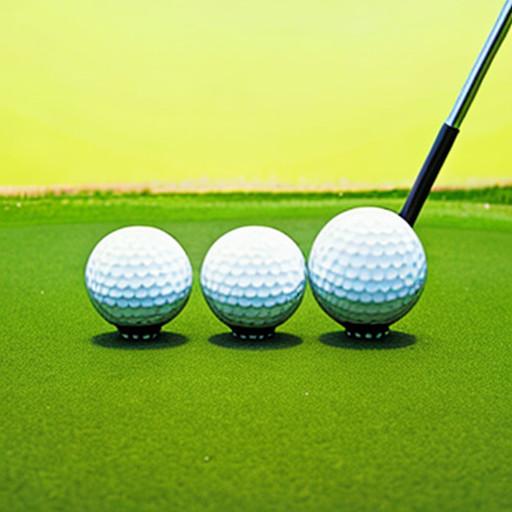Golf, often termed as a game of precision, requires not only skill but also the right equipment. Among the essential gear in a golfer’s kit, the golf ball stands as a crucial element that significantly impacts the game. With a plethora of options available, selecting the perfect golf ball tailored to your game can be overwhelming. Understanding the nuances of golf balls is key to optimizing your performance on the course.
The Core Components
Golf balls might appear simple, but they consist of complex engineering and materials designed to suit various playing styles and preferences. The core, cover, and dimples constitute the fundamental components of a golf ball.
Core: The core, positioned at the ball’s center, determines its compression and contributes to the ball’s overall feel. Golf balls typically come in two core types: high compression and low compression. High compression balls suit faster swing speeds, offering greater control and distance. Conversely, low compression balls are ideal for slower swing speeds, enhancing distance while maintaining control.
Cover: The cover material plays a vital role in a ball’s durability, spin, and feel. Golf balls usually feature covers made of urethane, surlyn, or other similar materials. Urethane covers provide excellent spin control, especially on approach shots and around the green, whereas surlyn covers offer increased durability and distance.
Dimples: The dimples on a golf ball might seem like mere aesthetics, but they significantly influence aerodynamics. Dimple patterns vary across balls, affecting lift, drag, and overall flight stability. These variations impact the ball’s trajectory and distance.
Matching Balls to Your Game
Selecting the right golf ball involves considering your skill level, swing speed, and preferences.
Beginner Level: Novice golfers might benefit from low compression balls that offer forgiveness and distance. Balls with a surlyn cover can withstand mishits, making them suitable for those still mastering their swing.
Intermediate Level: As your skills progress, you might seek a balance between distance and control. Mid-compression balls with a urethane cover could be a favorable choice, providing decent distance off the tee while offering better control around the greens.
Advanced Level: Advanced players often prioritize control and spin. High-compression balls with a urethane cover deliver exceptional spin control, allowing for precise shot shaping and better performance in various conditions.
Considerations Beyond Skill Level
Aside from skill, external factors like weather conditions and course type also influence the choice of golf balls.
Weather: Cold weather tends to reduce ball compression, affecting distance. Using low compression balls in such conditions can help maintain distance. In contrast, hot weather might cause the ball to compress more, potentially benefitting from higher compression balls.
Course Type: The type of golf course you’re playing on also matters. Courses with narrow fairways and complex green structures may require balls that offer superior control and spin, whereas open courses might allow for a focus on distance.
Conclusion
In the realm of golf, the importance of the golf ball cannot be overstated. Choosing the right ball tailored to your playing style, skill level, and course conditions can significantly impact your overall performance on the course. Experimentation and understanding the intricacies of various golf balls will empower you to make informed choices that optimize your game and enhance your enjoyment of this beautiful sport.
Next time you step onto the tee, armed with the knowledge about golf balls, make a confident choice that suits your game, and watch as your shots soar with precision and finesse.



